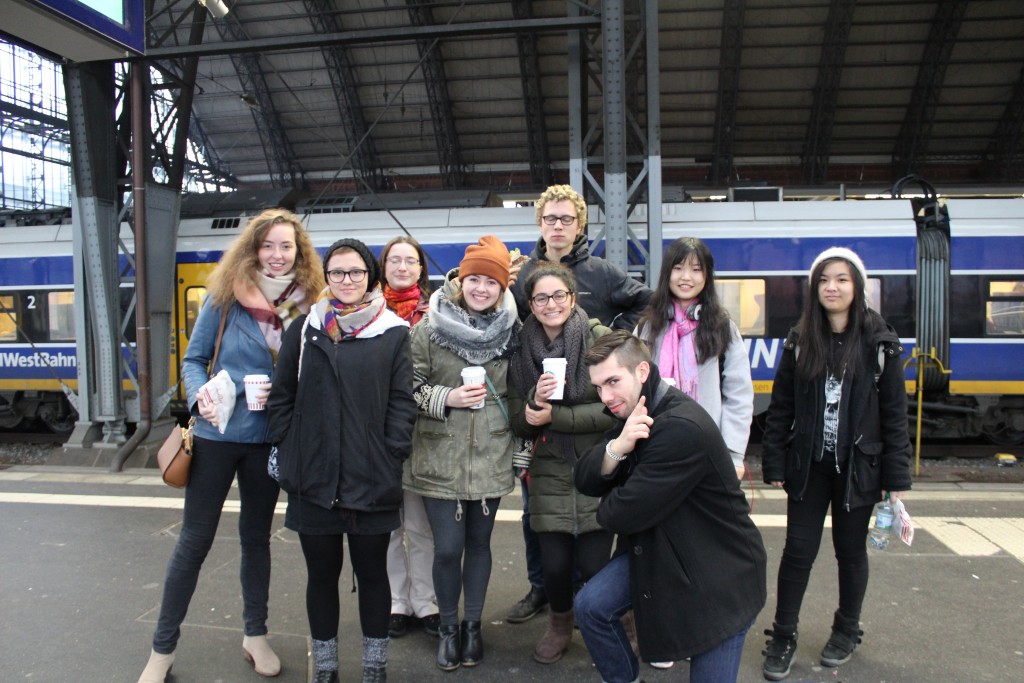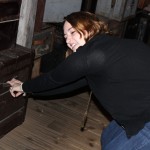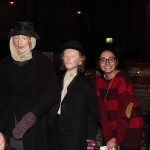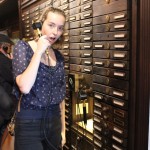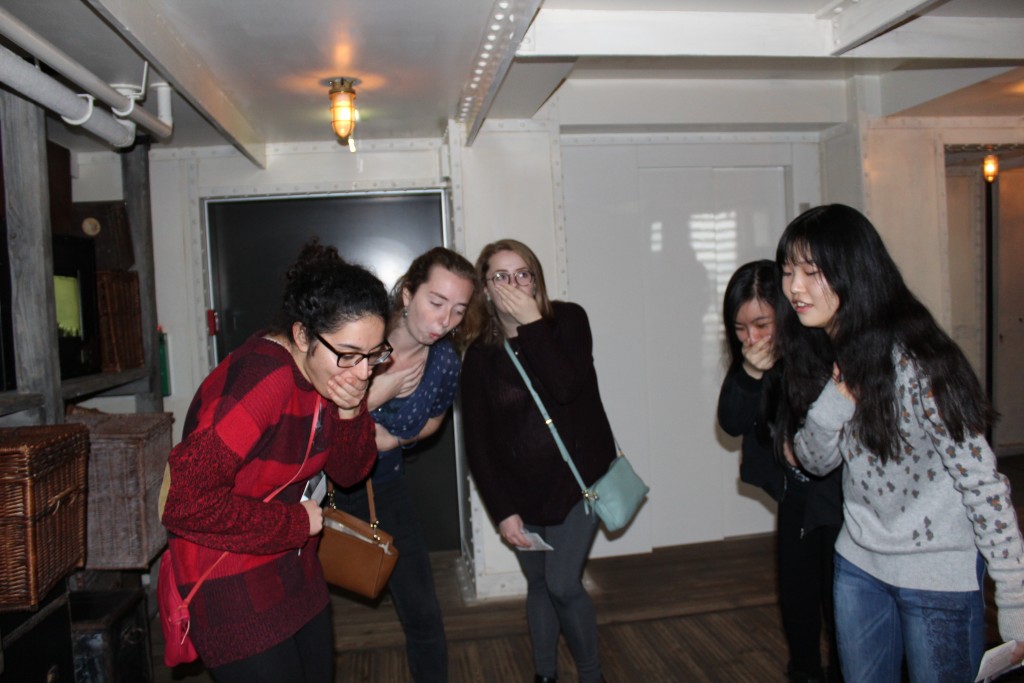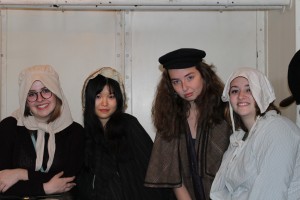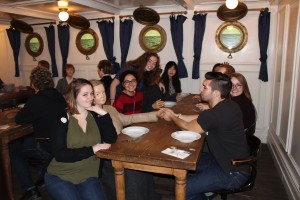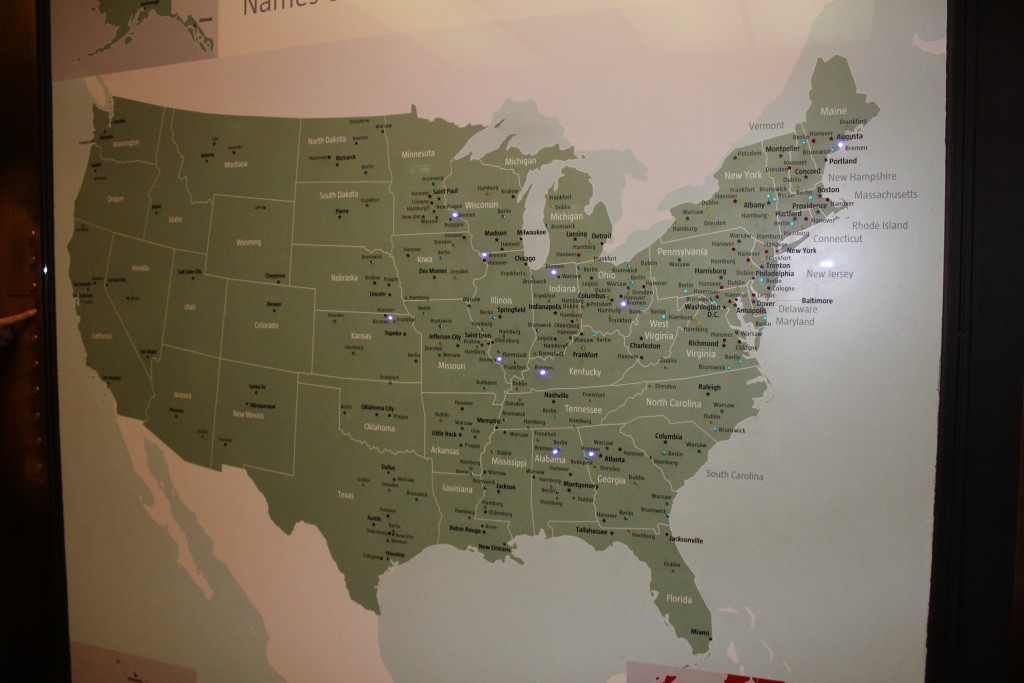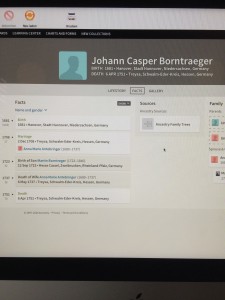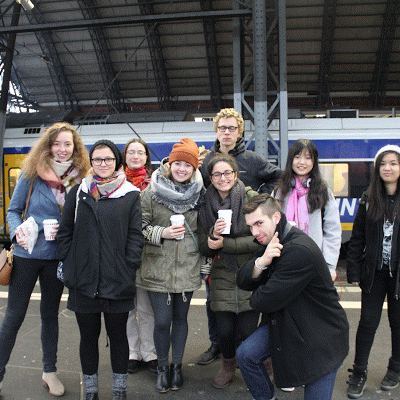by Kate King
Most people familiar with the German Department at Dickinson are aware that in Bremen full year students take one Dickinson course taught by Dr. Ludwig, better known as Janine, our academic director. The course is a cultural comparison of Germany and the USA. In our first few classes, we discussed emigration from Germany to the USA, which began in the late 1600’s and continued, usually in waves depending on what was going on in Europe, for the next few hundred years.
 To learn more about this, we took a field trip to Bremerhaven (the second city of the Bremen city-state) to visit the Deutsches Auswanderer Haus, or German Emigration Center. Bremen bought Bremerhaven in 1827 to replace its inland ports that were at risk from sediment deposition and it quickly became a hot spot for emigration due to the quick access to the North Sea and Atlantic Ocean.
To learn more about this, we took a field trip to Bremerhaven (the second city of the Bremen city-state) to visit the Deutsches Auswanderer Haus, or German Emigration Center. Bremen bought Bremerhaven in 1827 to replace its inland ports that were at risk from sediment deposition and it quickly became a hot spot for emigration due to the quick access to the North Sea and Atlantic Ocean.
Now if anyone reading this knows me, you probably know that I am a double science major and I minor in German for the language skills – I do not enjoy museums. I am like a three-year-old child in museums: if you don’t keep my attention with interactive things, I get tired and hungry and just want to go home. This museum catered to my inner toddler. Upon arrival, we were all issued boarding passes with the name of an emigrant of Germany and another name of an immigrant that came to Germany.
We started the tour by entering a replica of the waiting hall, which was part of the original emigration office that millions of people went through to leave Europe.
We were then guided into the next room to the docks where heard farewells from families. The next room, the Gallery of the 7 Million, allowed us to hear the personal stories of our emigrants. We then climbed the stairs of the ship seen from the docks and entered the ship to begin our voyage.
We ended up walking through different points in technological developments. The first had a small room, close to a double dorm room on Dickinson’s campus, with most of the room being built up into a bed with hay, a bucket, and no electricity. The room would have been shared by multiple families. The next stage had more of individualized bunk beds and a bathroom. The final stage had individual beds with proper sheets and an attached dining room with windows, all with electricity.
After we enjoyed our dinner with the passengers, we arrived in the New World. We were taken to Ellis Island where we were tested to see if we could enter the country. If we passed (Lee did not), we could continue to New York City to Grand Central Station. At Grand Central we listened to the end of our emigrants’ stories. Mine emigrated to Brazil and opened a tea company and the descendants still meet up regularly.
After leaving Grand Central, we crossed the bridge and became immigrants into Germany. This area had replicas of different shops that were opened by immigrants in the 1950’s-70’s. There was an ice cream café, hair dresser, camera shop, book shop, department store, kiosk, and cinema. The cinema showed films about immigration in Germany, but they were showing a feature while we were there that looked at relationships between Turks and Germans.
My favorite part of the whole tour was the family history room at the end. You could look through their computer records and find your family members. A few of us came prepared with names. I had photos of a genealogy book that someone in my family had put together not too long after I was born. So I went to the oldest name I could find and traced it back another two generations. The book I had said that he came from Switzerland, but the information I found through the ancestry.com portal said that he was born in Zweibrücken, which is close to where I lived when I did my exchange year in high school, and his father was born in Hannover in 1681, which is right next to Bremen. It is definitely something that I want to investigate further. Hopefully, I can find some living German relatives.
Animated photo show:

